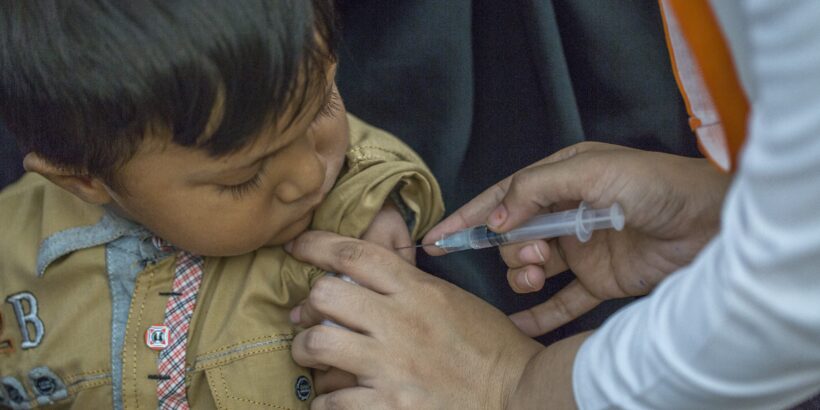Typhoid is a serious illness that can have a long recovery period. Beyond the physical impact of the disease, typhoid can be expensive to treat. Understanding the economic costs of typhoid treatment, termed ‘cost of illness’, is key information when governments are weighing health strategies. Typhoid conjugate vaccines (TCVs) are powerful tools to prevent typhoid. The cost to treat typhoid cases is a critical component of cost-effectiveness analyses and provides insight into the financial benefits of TCV introduction. Accounting for the economic burden of typhoid, which can be significant for governments and families, is an important consideration for policymakers as they make decisions on TCV introduction and their typhoid prevention and control strategy.
We know that the economic burden of typhoid can be considerable, both for health care systems and households, but costs vary by country and there are relatively few studies quantifying these costs. In our recently published review, we aimed to understand the breadth of evidence from low- and middle-income countries on the cost of typhoid in all age groups from published literature.
Cost of typhoid in Africa and Asia
Our review identified 13 published studies with data from 11 countries, mostly in Asia. From additional conversations with typhoid researchers, we identified 5 additional studies pending publication, which will provide evidence for 9 additional countries, mostly in Africa.
Absolute costs varied substantially across countries, subpopulations, and care settings. The total cost of a typhoid episode ranged from US$23 in India to US$884 in Indonesia. Most of the studies in our review characterized typhoid-related illness costs as catastrophic, though definitions varied. The definitions used included when cost exceeded 10-15% of the annual household’s income or when the cost exceeded 40% of monthly or annual nonfood household expenditure. Regardless of the definition, costs associated with a typhoid illness are difficult for families to absorb.

Additionally, in general, cases treated in outpatient settings cost less than inpatient settings. In studies that reported the cost to treat intestinal perforations, a life-threatening complication of typhoid that requires surgery, total costs ranged from $551 in Niger to $1,735 in India. Only one study provided specific costs for treating drug-resistant typhoid. The median cost of illness in patients with extensively drug-resistant typhoid in Pakistan was $US223. This cost was higher than median costs for all patients enrolled in the study but lower than patients who had an intestinal perforation. This suggests that drug-resistant typhoid cases are more expensive than cases that are treatable with available antibiotics. As drug-resistant typhoid cases continue to increase, it is likely that treatment costs will also increase. Additionally, severe complications like intestinal perforations, which can arise from a delay in treatment or inappropriate antibiotic treatment, are more dangerous for patients and more financially burdensome.
The evidence available from the identified studies in our review represents a range of cost estimates, at times with large ranges in the same country. Additionally, studies used different methodologies, preventing direct comparison of results across countries. Despite limitations in available data, the evidence illustrates the cost to treat typhoid in specific countries, offering trends for Asia and Africa. And the trends overwhelmingly show that it is expensive for health systems and families to treat a typhoid case.
TCVs prevent illness and the financial burden of typhoid
TCVs are safe and effective, providing protection from typhoid for at least 4 years. To date, more than 64 million children have been vaccinated with TCV. By preventing typhoid cases, we not only protect the health of children, we also prevent the need for treatment and associated economic costs that can be catastrophic for families. TCVs, by preventing typhoid illness, also potentially available health care resources that can be spent on other health priorities or patients, freeing up beds, surgical operating rooms, and personnel. For many countries, TCV are a cost-effective solution to take on typhoid.
Cover Photo: A child being vaccinated with TCV in Pakistan. Credit: Asim Hafeez/TyVAC.



